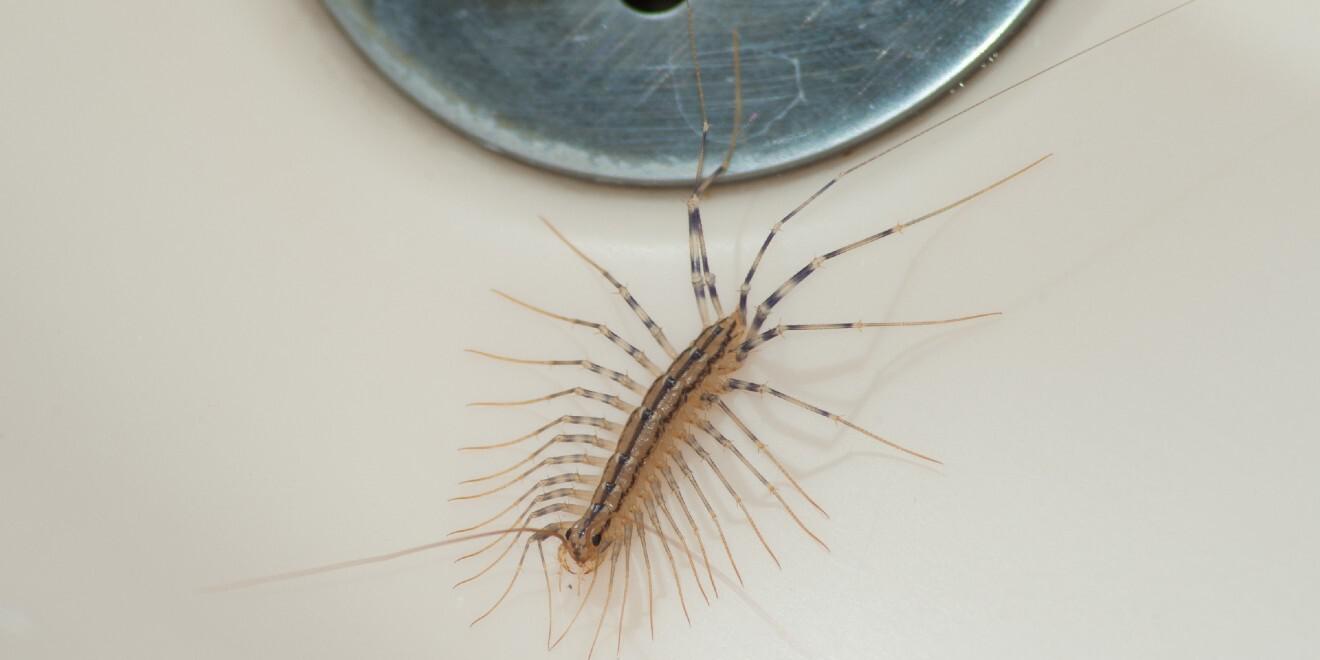Are Centipedes and Millipedes Dangerous?
Posted by Mosquito Squad
October 20, 2025

You're moving boxes in the basement when something with way too many legs scuttles across the floor. Was that a centipede or a millipede? If you’ve found one of these creepy crawlers in your home, take a breath. Most encounters are more startling than serious. That said, if these pests are in your home, understanding the difference between centipedes and millipedes, what attracts them, and when to bring in the centipede or millipede pest control pros will help you manage the problem.
Let’s get to know these common intruders.
What Is a Centipede?
Centipedes are flat, fast, long, and segmented invertebrates with venomous pincer-like front legs called forcipules. They are arthropods with hard exoskeletons. Centipedes can have anywhere from 30 to 345 legs! The number of legs depends on the specific species. Their many long legs contribute to their speed. Common types of centipedes around homes in the US are house centipedes, characterized by their yellowish coloring and 15 pairs of notably long legs, and stone centipedes, a reddish-brown species with shorter legs than house centipedes.
Centipedes are predators that hide in cool, dark environments and hunt at night for small invertebrates. While they are a nuisance, they are surprisingly effective when it comes to managing other bothersome pests. So, what do centipedes eat? They actively pursue roaches, spiders, silverfish, ants, and other invertebrates. Some species are even known to hunt and eat smaller vertebrates like lizards and frogs.
Are Centipedes Dangerous?
Centipedes are not typically a danger to people and pets. If you’re wondering, do centipedes bite? In a way, yes. It’s more accurate to say they sting with their forcipules. Most species only sting when startled or threatened and will usually hide if they see you. When they do strike, they pierce skin and inject venom designed to subdue small prey, not you. A typical centipede bite or sting brings quick, localized pain, some redness, and maybe swelling that fades within hours or days. More severe reactions are rare. If you react strongly to insect venom, treat a sting with extra caution and call a medical professional.
While centipedes are not a significant threat to most people, a centipede infestation can signal a larger pest problem in your home, which may create a health hazard. Centipedes are predators and are attracted to spaces with plenty of pests to eat.
What Is a Millipede?
Millipedes are slow and rounded arthropods. Their appearance is often compared to that of an earthworm. With two pairs of short millipede legs per body segment, they look dense and stubby compared to centipedes. Most species are less than 1.5 inches long. Millipedes are recyclers, or detritivores, and help ecosystems by breaking down organic matter. Outdoors they feed on decaying leaves, wood, and more. Indoors they’re mostly lost travelers following moisture.
Are Millipedes Dangerous?
Annoying sometimes – harmful, no. Do millipedes bite? No, millipedes cannot bite or sting. Instead, to deter predators, many millipede species secrete defensive compounds with a bad smell. When people touch a millipede, they usually only experience mild skin irritation from the millipede’s defense compounds. Along with the bad smell they secrete to deter threats, these arthropods protect themselves by curling into a ball to present their hard, armored body.
Centipede vs. Millipede - Helpful Distinctions
If you still aren’t sure if you’ve found a centipede or a millipede in your house, here’s a quick side-by-side to settle the confusion:
- Body shape & speed: Centipedes are flattened and fast while millipedes are cylindrical and slow.
- Legs per segment: Centipedes have one pair of legs per body segment and millipedes have two pairs per segment.
- Role & diet: Centipedes are predators that hunt other insects. Millipedes are detritivores that break down decaying plant matter.
- Indoor behavior: Centipedes are typically seen in dark, hidden spots crawling around in search of prey and millipedes will often curl up when spotted by people and other threats.
- Risk to people: Centipedes can deliver a painful sting if handled. Millipedes don’t bite – at worst, they release an irritating defensive secretion.
- Control focus: Managing centipedes often means reducing other insects. Managing millipedes starts with moisture control and exclusion.
How to Get Rid of House Centipedes and Millipedes
If you want a fast, durable fix, first think about their preferred habitat. Getting rid of centipedes in the house and their millipede counterparts starts with moisture control and cleanup. Try these methods to deter centipedes and millipedes from your indoor space:
- Moisture & clutter: Run dehumidifiers in basements and crawl spaces, improve ventilation in bathrooms, and keep organic clutter, like woodpiles and leaf debris, off slabs and foundation beds. These simple tweaks make the area less damp and attractive.
- Block entries: Weatherstripping, screens, and caulk go a long way. Walk the perimeter of your home and seal cracks and crevices in foundations, door thresholds, siding seams, and utility penetrations.
- Reduce food sources: Centipedes follow the food. To prevent centipedes from moving in, it’s important to not only deter them from getting inside but also other pests that may attract them to your space. Tighten up food storage, clean up crumbs and pet kibble, and address any active infestations so you’re not creating a centipede buffet.
- Utilize sticky traps: Place sticky taps in dark corners and crevices to catch lurking millipedes, centipedes, and other pests. Remember to check and replace the traps regularly to make an impactful difference.
What to do When DIY Control Isn't Enough
Sometimes the natural conditions around your property keep refueling an infestation. That’s when professional millipede and centipede home treatment pays off. Mosquito Squad Plus® makes prevention straightforward. Our home shield service establishes a protective perimeter around your home so wanderers are intercepted before they slip inside. Targeted perimeter applications focus on where centipedes and millipedes typically abide outside – mulch beds, slab edges, and shaded, moisture-prone landscaping. During our perimeter millipede and centipede pest control services we also treat potential entry points outside, such as the edges of doors and windows. Our treatment helps to kill pests on contact and continues to deter them for up to 21 days after treatment.
If you’re done hosting many-legged houseguests, your local Squad® can help. Learn how our pros can help deter pests when you call (877) 332-2239 or request a cost-free quote online.
